This is my first post so apologies for any formatting related issues.
So I have a dataset which was obtained from an atomic microscope. The data looks like a 1024x1024 matrix which is composed of different measurements taken from the sample in units of meters, eg.
data = [[1e-07 ... 4e-08][ ... ... ... ][3e-09 ... 12e-06]]
np.size(data) == (1024,1024)
From this data, I was hoping to 1) derive some statistics about the real data; and 2) using the power spectrum density (PSD) distribution, hopefully create a new dataset which is different, but statistically similar to the characteristics of the original data. My plan to do this was 2a) take a 2d fft of data, calculate the power spectrum density 2b) some method?, 2c) take the 2d ifft of the modified signal to turn it back into a new sample with the same power spectrum density as the original.
Moreover, regarding part 2b) this was the closest link I could find regarding a time series based solution; however, I am not understanding exactly how to implement this so far, since I am not exactly sure what the phase, frequency, and amplitudes of the fft data represent in this 2d case, and also since we are now talking about a 2d ifft I'm not exactly sure how to construct this complex matrix while incorporating the random number generation, and amplitude/phase shifts in a way that will translate back to something meaningful.
So basically, I have been having some trouble with my intuition. For this problem, we are working with a 2d Fourier transform of spatial data with no temporal component, so I believe that methods which are applied to time series data could be applied here as well. Since the fft of the original data is the 'frequency in the spatial domain', the x-axis of the PSD should be either pixels or meters, but then what is the 'power' in the y-axis describing? I was hoping that someone could help me figure this problem out.
My code is below, hopefully someone could help me solve my problem. Bonus if someone could help me understand what this shifted frequency vs amplitude plot is saying:
here is the image with the fft, shifted fft, and freq. vs aplitude plots.
Fortunately the power spectrum density function is a bit easier to understand
Thank you all for your time.
data = np.genfromtxt('asample3.0_00001-filter.txt')
x = np.arange(0,int(np.size(data,0)),1)
y = np.arange(0,int(np.size(data,1)),1)
z = data
npix = data.shape[0]
#taking the fourier transform
fourier_image = np.fft.fft2(data)
#Get power spectral density
fourier_amplitudes = np.abs(fourier_image)**2
#calculate sampling frequency fs (physical distance between pixels)
fs = 92e-07/npix
freq_shifted = fs/2 * np.linspace(-1,1,npix)
freq = fs/2 * np.linspace(0,1,int(npix/2))
print("Plotting 2d Fourier Transform ...")
fig, axs = plt.subplots(2,2,figsize=(15, 15))
axs[0,0].imshow(10*np.log10(np.abs(fourier_image)))
axs[0,0].set_title('fft')
axs[0,1].imshow(10*np.log10(np.abs(np.fft.fftshift(fourier_image))))
axs[0,1].set_title('shifted fft')
axs[1,0].plot(freq,10*np.log10(np.abs(fourier_amplitudes[:npix//2])))
axs[1,0].set_title('freq vs amplitude')
for ii in list(range(npix//2)):
axs[1,1].plot(freq_shifted,10*np.log10(np.fft.fftshift(np.abs(fourier_amplitudes[ii]))))
axs[1,1].set_title('shifted freq vs amplitude')
#constructing a wave vector array
## Get frequencies corresponding to signal PSD
kfreq = np.fft.fftfreq(npix) * npix
kfreq2D = np.meshgrid(kfreq, kfreq)
knrm = np.sqrt(kfreq2D[0]**2 + kfreq2D[1]**2)
knrm = knrm.flatten()
fourier_amplitudes = fourier_amplitudes.flatten()
#creating the power spectrum
kbins = np.arange(0.5, npix//2+1, 1.)
kvals = 0.5 * (kbins[1:] + kbins[:-1])
Abins, _, _ = stats.binned_statistic(knrm, fourier_amplitudes,
statistic = "mean",
bins = kbins)
Abins *= np.pi * (kbins[1:]**2 - kbins[:-1]**2)
print("Plotting power spectrum of surface ...")
fig = plt.figure(figsize=(10, 10))
plt.loglog(fs/kvals, Abins)
plt.xlabel("Spatial Frequency $k$ [meters]")
plt.ylabel("Power per Spatial Frequency $P(k)$")
plt.tight_layout()

